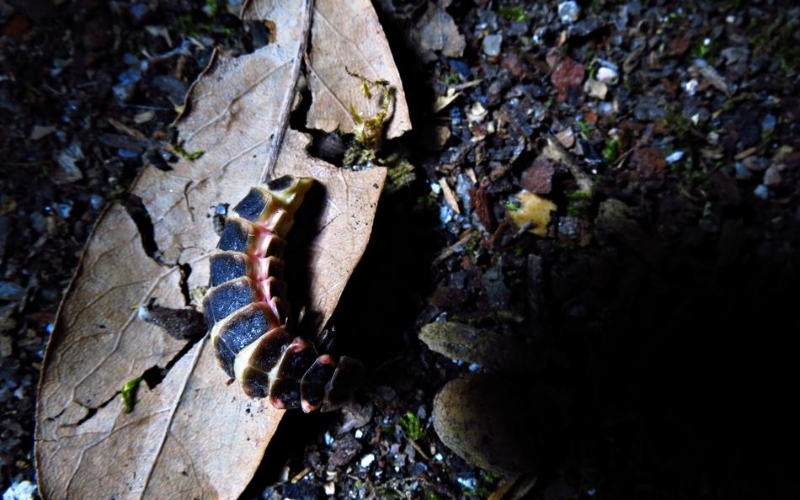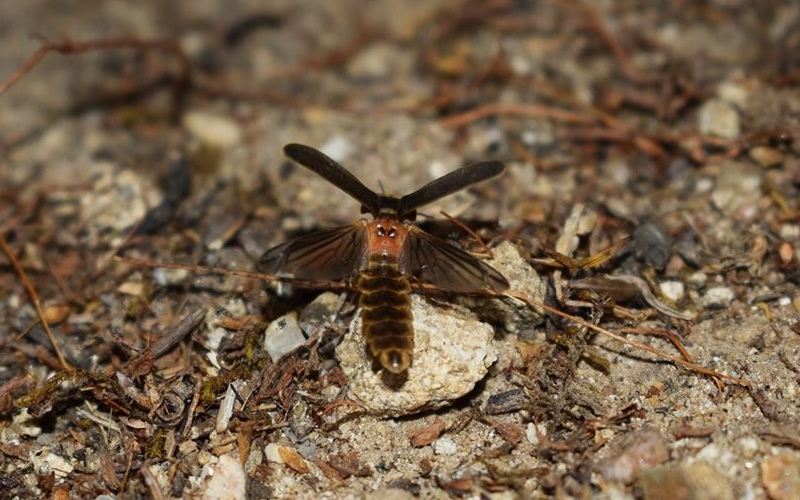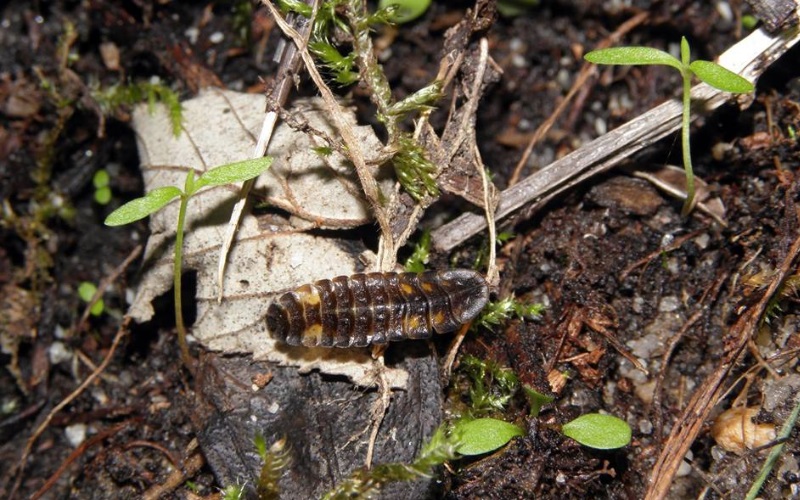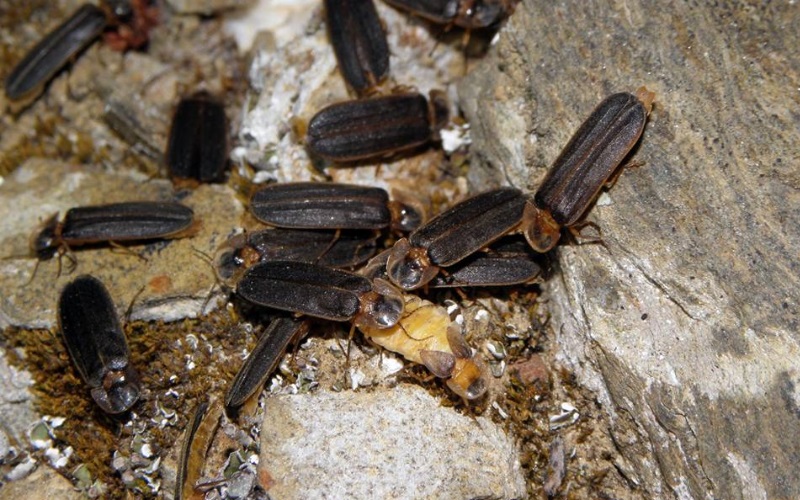

How to attract (and keep) fireflies living in your land
Learn from a network of experts how to turn every nook and cranny into an oasis to help biodiversity, from birds and amphibians to bees and bats. Gonçalo Figueira is a firefly specialist and founder of the Lightalive micro-reserves project. Here he explains what we can do to make these peculiar snail and slug-hunting creatures feel at home.
Like ladybirds, fireflies are beetles, but they have one quality that sets them apart from many other members of this group: ‘they have the ability to produce their own visible light,’ notes Gonçalo Figueira. Within the vast coleoptera order (beetles), they have their own family: the Lampyridae family.
Last 10 July, this specialist in fireflies led a walk in the Gulbenkian Garden during which he spoke about the situation of these insects in Portugal and how each of us can contribute to their conservation.
But what we all want to know in the end is how these mysterious beetles manage to glow in the dark. According to Figueira, the light of the firefly is produced by a biochemical reaction that brings together three elements: the enzyme luciferase, a molecule called luciferin, and oxygen. This light serves various purposes, ‘including for reproduction, with the female usually using her light to attract the male, and for protection from predators by confusing or signalling their impalatability and toxicity.’
Of the more than 2000 known species in the world, with more than 65 in Europe, there are records of 8 to 10 different species of fireflies present in Portugal. The total estimated number varies according to the researchers in question, but ‘recent discoveries suggest that it’s quite possible that there are more than a dozen,’ Figueira claims.
Lamentably, ‘we don’t know much about the situation of fireflies in Portugal, as the level of information is quite limited,’ with even some doubt as to the status of some species. Within the Lampyris genus, for example, scientists only recently discovered that what they thought was the firefly Lampyris noctinuca, ‘one of the most common fireflies in Europe’ present in Portuguese territory, ‘is actually a new species for science,’ Lampyris iberica.
Other questions about fireflies yet to be clarified depend on genetic studies being performed in the United States, ‘but the pandemic has greatly delayed the analysis process,’
while there is also a general lack of information regarding the extent to which the various species in Portugal are currently at risk of extinction. ‘The only solution left to us is to continue monitoring,’ he says.


Snail and slug-eaters
Such doubts aside, it is certain that fireflies ‘play a fundamental role in the control of potential pests,’ because a large part of these beetles ‘feed on gastropods such as snails and slugs,’ notes the specialist.
But is it possible to attract fireflies to our garden or to our balcony in the middle of the city? A garden perhaps, as long as the conditions are right, but ‘a balcony is unlikely to attract a viable population of fireflies,’ Figueira explains, because the conditions in these places ‘are generally not ideal.’ Furthermore, ‘our fireflies mainly colonise new territories during their larval stage, when they spend most of their time on the ground.’
A garden in the city or in a rural environment, ‘where there are more fireflies,’ needs to have various conditions in place. It is very important that there are green corridors between the space in question and a reproductive population of these beetles, because both females and larvae are wingless and move through the soil. Indeed, these insects spend a good part of their lives – between two and three years – as larvae, and only about two weeks in their adult phase.
These gardens also require snails and slugs for them to eat, so it’s best not to use any kind of molluscicides or other pesticides. There must also be little or no ‘influence of artificial light, as lights confuse the fireflies.’ Finally, it is best that the land is ‘covered with some vegetation without much disturbance,’ for example,’ without soil mobilisation and trampling.’
‘It doesn’t have to be the whole garden, but it’s best that you keep at least a small space from which you don’t remove the leaves and other dead vegetation’, suggests Gonçalo Figueira. The remains of this type of vegetation helps preserve humidity and attract snails and slugs, creating the ideal conditions for the little firefly larvae.
Even so, although urban green spaces are not among the spaces most frequented by these little luminescent creatures – especially when they’re surrounded by highways – there have been a few surprises. That’s what happened in the Gulbenkian Garden, where fireflies were spotted this last summer, though it is still not clear how they got there.
In the countryside, it’s not possible to find these beetles everywhere due to a lack of appropriate habitat conditions such as ‘small forests or hedges of vegetation’. This is the case in some parts of the Alentejo, for example, where ‘it’s possible to walk several kilometres without observing a firefly, amid agricultural fields where there are practically no hedges marking their boundaries.’


Anyone can contribute
By creating conditions for these beetles, we help to combat the destruction of their habitat, which is the main threat to this group of species, stresses Gonçalo Figueira, based on personal research he has undertaken in the Estremadura region. Climate change and the excess of artificial light are other important threats. ‘The question of pesticides and intensive agriculture is also a big issue, particularly those types of agriculture which demands frequent tillage.’
Even those of us who don’t have land on which to shelter these peculiar insects can play an active role in their conservation, notes the specialist. How? By contributing ‘with observations for monitoring projects,’ such as through the platform BioDiversity4All, or by helping to preserve fireflies ‘in the green spaces of family and friends.’
This article is part of the “Gardens for Wildlife” series, a partnership between Wilder magazine and the Calouste Gulbenkian Foundation.